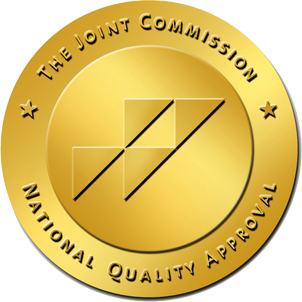
As the United States continues to experience the worst drug overdose epidemic in history, employers will often find themselves at the frontlines of an employees’ substance abuse problem. While the opioid epidemic has been prominent in the headlines of the past couple of years, almost every single person in America has come into contact with someone who is struggling with addiction. For many, it is a coworker, a neighbor, a close friend or a family member who has been fighting addiction publicly, or privately. We all tend to know someone who has been affected by this ongoing tragedy. As a human resources professional, identifying drug abuse in your workplace is increasingly likely and you are in a great position to offer much needed help.
Drug abuse tends to be a sensitive topic at the workplace. Most people feel like they need to hide their problems with drugs or alcohol due to the negative stigma surrounding their substance abuse. The problem with the stigma is that many who know they need help simply won’t ask for it. They fear losing their family, job, social status or freedom because they feel people would stop seeing them as a person. Many people continue to negatively judge others for their addictions. That stigma greatly contributes to the problem, as many ultimately lose their lives when their substance abuse goes without the treatment options and resources they so desperately need.
More than 72,000 Americans died from drug overdoses in 2017.
–Centers for Disease Control (CDC) (1)
As employers, we can identify potential drug abuse problems in the workplace and help our employees get access to the health care they need.
Employees are arguably the most valuable assets for your organization, so it makes sense as an HR professional to help your personnel attain a lifetime of sobriety through healthy choices.

Two of the greatest tools available to a company are random drug testing, and knowing how to spot the different types of erratic behavior that is often associated with drug abuse. Frequent absenteeism is one common sign that someone who works for you could be struggling with a substance use disorder.
Illegal and prescription drugs are commonly abused in the United States. It is estimated that for every 50 people you employ, 3 to 4 are currently experiencing a problem with drugs and/or alcohol. (2) Have your department supervisors been trained in how to identify a potential problem? Do you feel that the safety of employees at your company could be compromised by a person’s alcohol or drug abuse? Regardless of your answers to those questions, it is always a good idea to understand the warning signs of a potential addiction occurring within your workplace.
If you suspect an individual has a drug or alcohol problem and it’s affecting their work productivity or the safety of others, you should act immediately.
Here are some common signs of substance abuse you can look for to help you identify a potential alcohol or drug problem with one of your employees:
1. Missing work or frequent instances of being late:
Many who struggle with a substance abuse disorder miss more days of work than the average employee. They are also late more frequently than your average worker. In 2016, the National Institute for Occupational Safety and Health (NIOSH) found that a worker with a prescription pain medication addiction missed an average of 29 days of work per year. (3) Compare that with the 10.5 average number of days missed by most other employees. Frequent absences occurring after holidays, weekends and paydays are normal for a drug addict. These are all common signs that may stand out to you or your department supervisors. While missing a lot of work doesn’t necessarily mean a drug abuse problem, it should be worth taking notice.

2. Noticeably lower productivity in job performance:
When an employee shows up to work but somehow doesn’t seem to get the job done, this may be a sign of a chemical dependence issue. This is costing the American economy a lot of money,
roughly $504 billion dollars per year (4), according to the White House Council of Economic Advisors. As you try to identify drug abuse in the workplace, take note of employees who were once productive, but now seem to produce less in an average workday.
3. Higher health care expenses, worker’s compensation and disability claims:
It is estimated that employees who abuse illegal drugs have health care costs that are 3 times higher than the average worker. Factor this in with the increased likelihood of an on the job accident and you can see where the costs could exponentially grow.
4. Changes in outward physical appearance:
It could be an employee who has suddenly lost a lot of weight, or someone who comes into work looking disheveled, with dirty, wrinkled clothes. Personal hygiene is often neglected with a severe addiction, so look for these signs as well. These can be symptoms of an underlying problem with drug or alcohol abuse.
5. Major shifts in mood (abruptly or over time)
Behavior that is typical of a person addicted to drugs can be very subtle or depending on the types of drugs they are abusing, over the top. Simply withdrawing from other employees, or sudden quiet shyness could be a warning sign of an addiction or another mental health issue, such as anxiety or depression. Paranoid behavior can be more pronounced; the person may develop a temper that can be easily set off. Sometimes this results in violent, aggressive behavior that should not be tolerated at a place of work.
6. Physical symptoms that are visibly noticeable:
Look for these signs in your employees and you just may find someone who needs help with their addiction: Bloodshot eyes, shaking, body tremors, dilated pupils, bad breath or constant use of gum or breath mints. Constant sweating, clammy hands, a runny nose or constant touching of their nose could also be signs of someone who is getting high while on the job.
7. Avoiding people after breaks from work:

If an employee seems to act strange after personal time, such as a lunch break or a simple trip to the bathroom, there may be a reason. They may be attempting to hide the smell or other physical sign of the drug they were using. It may be out of the paranoia which is often associated with abuse of various illicit or prescription drugs.
8. Employees caught sleeping on the job:
If one of your workers has fallen asleep at the job, this is could very well be a sign of drug abuse. In an office setting this may not be a major safety concern. Everyone experiences drowsiness every now and then. In an industrial or intensive production environment however, falling asleep on the job could become a deadly mistake. Either way, sleeping on the job is a detriment to the overall health and safety of your workplace, and if it happens often with a particular employee, they may be exhibiting signs of a substance use disorder.
9. Concerns brought up by coworkers and other employees:
Listening to your employees as a valuable resource is highly recommended here. Most often, employees who work closely with the individual will know more than you do about the situation. If you have a drug-free workplace agreement in use, other employees will be aware of the dangers that come with drug use at your company. Make sure you investigate the situation, talk to their supervisors and other coworkers to get concrete answers and make a swift judgment of the situation.

A drug-free workplace plan should be implemented to address any concerns or suspicions regarding potential drug abuse issues.
Perhaps it is time to consider a comprehensive workplace alcohol and drug abuse program for your employees. Team training initiatives can greatly increase awareness to the threats associated with drug abuse on the job.Many human resource departments cover all of this but if you are unsure of your company’s policies you should talk to your
HR department for more information. According to a recent National Safety Council study (5), less than one fifth of employers in America feel “extremely prepared” to address drug abuse at their company. 76% of employers do not offer any training on how to spot on the job drug abuse.
Once alcohol or drug abuse is identified, an evidence-based rehabilitation program should be instigated as soon as possible.
In America, a large portion of the over 20 million people who struggle with addiction do not receive the treatment they need. An employer is uniquely positioned to help their people here. This help may ultimately save someone’s life. Employee Assistance Programs (EAP’s) are a popular form of assistance that can help you keep your most valuable assets living healthy, productive lives. Your employees are the backbone of your corporation. Your EAP could be a confidential service to help them deal with a substance abuse problem or another physical or mental health issue. These programs typically reduce harm associated with drug use, such as injuries, lowered productivity and theft. EAP’s are also are helpful in boosting overall job performance and employee morale.

Through most employer insurance plans, we can help guide our employees find the treatment and resources they so desperately need.Is your company currently ready to meet the challenges facing your employees? Wouldn’t it feel good to know you might have a hand in saving someone’s life?
The Bottom Line:
Employer supported and monitored treatment yields better sustained recovery rates than treatment initiated at the request of friends and family members. (5)
-(2009) Substance use, symptoms, and employment outcomes of persons with a workplace mandate for chemical dependency treatment. Psychiatric Services, 60(5), 646-654.
With the help of our compassionate, professional, evidence-based drug and alcohol rehabilitation programs, 10 Acre Ranch can help you to better serve your employees. We will show you exactly where and when you can offer them support. Through our combined efforts we will help you foster productivity and a safe environment for your employees and everyone who comes into contact with your organization or business.
Want to schedule an on-site training? Give us a call so we can help you right away:
(877) 228-4679
(1): https://www.cdc.gov/nchs/nvss/vsrr/drug-overdose-data.htm
(2): https://www.drugabuse.gov/publications/drugfacts/nationwide-trends
(3): https://www.cdc.gov/niosh/topics/opioids/data.html






